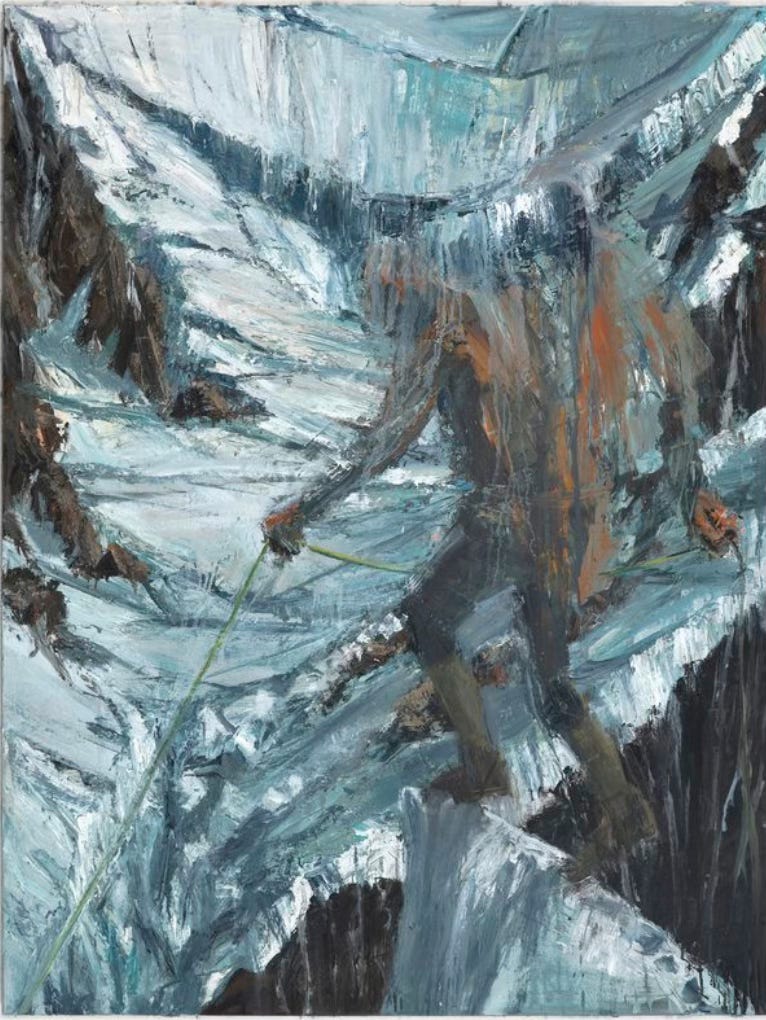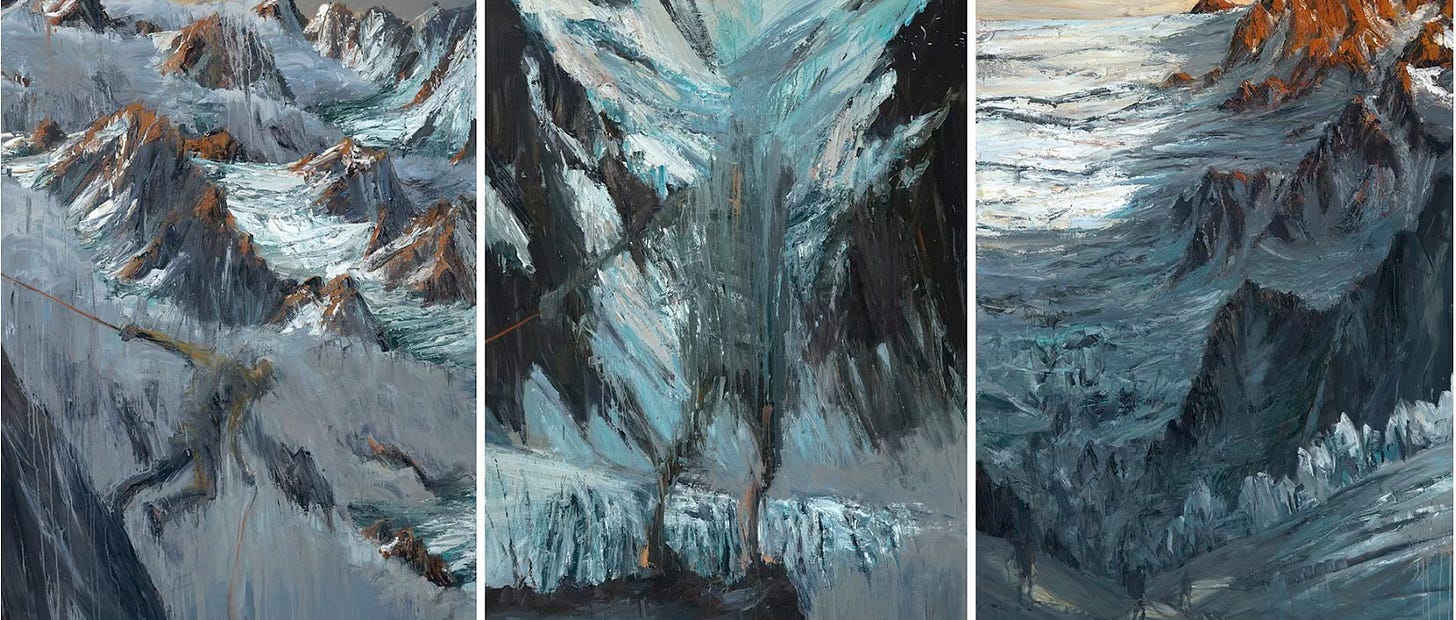For more than 50 years Euan Macleod has been visiting the Haupapa Tasman Glacier in New Zealand’s South Island. Born in Christchurch, but resident in Sydney since 1981, Macleod is arguably the leading trans-Tasman artist of our time. Although his career has blossomed in Australia, he still draws sustenance from his birthplace, finding inspiration in a very different landscape.
Euan Macleod: Glacier, at the S.H. Ervin Gallery, is a survey that brings together paintings from 2009-24, reflecting the artist’s ongoing engagement with a location that can be harsh, rugged and forbidding, but also a place of great beauty. It’s inevitable that these works should be viewed as contemporary expressions of that quality we call “the sublime”, made famous by masters of the Romantic era such as Caspar David Friedrich and J.M.W. Turner.
The standard definition of the sublime was coined by Irish statesman and philosopher, Edmund Burke, in a treatise of 1756. The crucial aspect of Burke’s investigation is that he drew a line between the sublime and the beautiful, arguing we may take a keen sense of pleasure from scenes that inspire fear and terror. What was most important was to overcome the habitual indifference of everyday life. Burke tried to capture the paradox of taking pleasure in a frisson of terror, with coinages such as “delightful horror” – a term often used when critics try to explain the popular fascination with movies whose chief aim is to frighten the life out of us.



